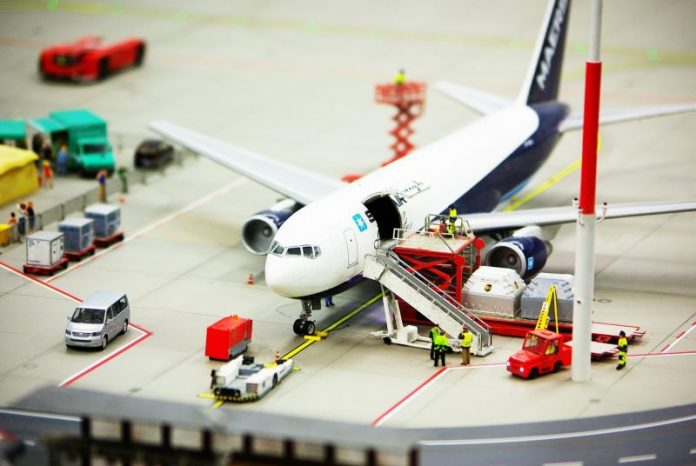-
Air cargo demand contraction slows in June 2023, according to the International Air Transport Association
-
Global demand fell 3.4% in June, the smallest year-on-year dip since February 2023
-
For the first half of 2023, demand declined to 8.1%
-
Air cargo continues to suffer more than container cargo from the slowdown in global trade
Air cargo demand contraction slowed in June 2023, the smallest year-on-year decrease in demand since February 2022, according to the International Air Transport Association (IATA).
Global demand in June, measured in cargo ton-kilometers (CTKs), fell 3.4% compared with June 2022 (a 3.7% decrease for international operations).
IATA cautiously welcomed the latest data, saying it remains hopeful the sector’s difficult times will moderate further as inflation eases in the leading economies and revive demand.
RELATED READ: Weak air cargo demand continued in May: IATA
For the half year, demand slid 8.1% compared with the January-June 2022 period (an 8.7% drop for international operations) and was only 2.4% below June 2019 levels, about half a year before the pandemic.
Air cargo capacity growth also slowed in June. Capacity, as measured by available cargo ton-kilometers (ACTKs), grew 9.7% in June compared with year-ago levels, slower than the double-digit growth between March and May.
IATA said this reflects strategic capacity adjustments that airlines are making in a weak demand environment. Capacity in the first half of the year increased 9.9% y-o-y and is now 3.7% above June 2019 (pre-pandemic) levels.
Key factors influencing air cargo demand include:
• Both the manufacturing output Purchasing Managers Index (PMI) at 49.2 in June, and the new export orders PMI (47.1) were below the critical threshold 50 mark, indicating a decline in global manufacturing production and exports in June.
• Global cross-border trade fell 2.4% y-o-y in May, reflecting the cooling demand environment and challenging macroeconomic conditions. The difference between the annual growth rates of air cargo and the global goods trade narrowed to -2.6 percentage points in May, the smallest gap since January 2022.
However, IATA said the gap still suggests air cargo continues to suffer more than container cargo from the slowdown in global trade.
“We remain hopeful that the difficult trading conditions for air cargo will moderate as inflation eases in major economies. This, in turn, could encourage the central banks to loosen the money supply, which could stimulate greater economic activity,” said IATA director general Willie Walsh.
Asia-Pacific airlines saw their air cargo volumes decrease by 3.6% in June 2023 compared to the same month in 2022. This was also a decline compared to May (-2.5%), mainly owing to weak demand on within-Asia markets, although the Asia-North America trade lane saw improved performance. Available capacity in the region increased by 24.4% compared to June 2022. Looking at the first half of 2023, cargo demand was down 6.5% versus the year-ago period against a 27.0% rise in capacity.
North American carriers had a 6.5% decrease in total cargo volumes in June 2023 compared to the same month in 2022, marking the fourth consecutive month in which the region had the weakest performance. This was, however, an improvement compared to May (-8.6%). Europe-North America CTKs shrank by only 2.7% in June, following three months of double-digit contractions. Capacity increased 0.7% compared to June 2022. For the 2023 first half, cargo demand was down 10.5% compared to the 2022 first half, while capacity dipped 0.7%.
European carriers experienced a 2.8% decrease in cargo volumes in June 2023, compared to the same month in 2022. This was an improvement in performance compared to May (-6.6%), in part due to the aforementioned Europe-North America performance. Capacity increased 4.4% compared to June 2022. Cargo demand was down 10.2% for the first six months of 2023 compared to last year, as the half-year capacity rose 2.5%.
Middle Eastern carriers posted a 0.5% increase in cargo volumes in June 2023 versus a year ago. This was a strong turnaround from the 2.9% year-over-year decline registered in May. Capacity rose 11.1% for the month. Both Middle East-Asia and Middle East-Europe route areas saw annual growth. For the first half of the year, cargo demand was down 5.6% compared to a year ago, with an 11.2% hike in capacity.
Latin American carriers had strongest performance in June 2023, with a 7.3% increase in cargo volumes compared to June 2022. This was an improvement compared to May (+3.8%). Capacity in June was up 15.4% over the same month in 2022. For the 2023 first half, cargo demand was up 0.9% versus a year ago, while capacity climbed 18.0%.
African airlines posted a 2.8% decrease in demand compared to June 2022. This was a decline in performance compared to the previous month (-1.9%). Capacity in June was down 3.7% compared to the same month in 2022. For the first half of the year, cargo demand slowed by 4.4% while capacity climbed 1.6%.





